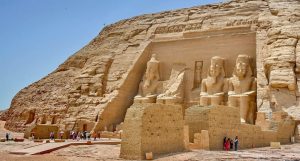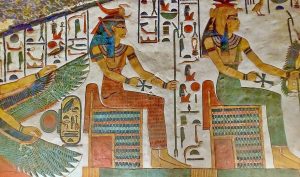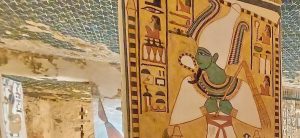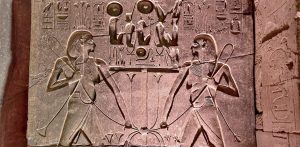The Nile Valley and Delta, known as the “Black Land” because of the color of its rich alluvial deposits, were the beginning and end of civilization for the Ancient Egyptians. Beyond there was the “Red Land,” or desert, which held either practical or metaphysical importance. It had mineral richness and roads to the Red Sea coast east of the Nile, and it had the Kingdom of Osiris, Lord of the Dead, west of the river, where the dead were supposed to “travel west” to meet him.
Egypt’s rulers had to cope with the Western Desert Oases as suppliers of exotic commodities and possible staging grounds for invaders once it was recognized that human communities were out there. Though they have been tied to Nile Valley culture since antiquity, they have always been distinct – and continue to be so.
The most obvious example is the Siwa Oasis, which is located near the Libyan border and whose people speak a different language and have practices that are not shared by the rest of Egypt. The attraction of the oasis is epitomized by its ruined citadels, lush palm groves, clear lakes, and golden dunes. The four “inner” oases of Bahariya, Farafra, Dakhla, and Kharga are located on the “Great Desert Circuit,” which begins in Cairo or Assyut and travels through the New Valley Governorate, where modernity has had varying degrees of impact on each oasis. While Bahariya and Farafra are still essentially desert settlements, subsisting on traditional crops of dates and olives, Dakhla and Kharga have grown into full-fledged urban cities.
The allure of the awe-inspiring desolation, much of which is gravel pans rather than pure “sand desert.” The Fayoum and Wadi Natrun, two quasi-oases are much closer to Cairo (and ideal for day trips). The Fayoum is more like the Nile Valley than the Western Desert, with many old ruins dating back to the Middle Kingdom to illustrate its importance. Despite being a popular holiday destination for Egyptians, it does not draw many international visitors, except for hunters and ornithologists. Wadi Natrun is famous for its Coptic monasteries, which attract a large number of Egyptian pilgrims but few international visitors.
The desert:
The desert itself has a lot of interest in this location. It’s no coincidence that Islam, Judaism, and Christianity arose in deserts with vast scarps and depressions that revealed God’s hand at work, as well as life-giving springs and oases. The landscape was once savanna, but it was reduced to its current state millennia ago due to geological processes and overgrazing by Stone Age pastoralists. The Western Desert spans 681,000 square kilometers (more than two-thirds of Egypt’s entire land area), is just one portion of the Sahara belt that runs through northern Africa.
British cartographers gave it the odd name “Libyan Desert” after viewing it from the Nile’s perspective. To make matters even more complicated, the “Libyan Desert” was applied to its southern reaches and sections of northeastern Sudan. Aside from the oasis, the Qattara Depression, Africa’s lowest point, and the Great Sand Sea, which runs along the Libyan border and once swallowed an army, are its most notable characteristics. The Gilf Kebir and Jebel Uwaynat, located farther south, have some of Egypt’s most spectacular prehistoric rock art and were the scene for the events depicted in the novel and film The English Patient.
Visiting the desert: safaris Trips
Desert safaris are the most convenient and often the only method to see some of the most beautiful sights in and around the oasis. Take a look at our desert safari packages. Longer journeys (4-19 days) to more distant locations like the Great Sand Sea, Gilf Kebir, or Jebel Uwaynat must be scheduled weeks or months in advance. Safaris to the Gilf and Uwaynat are only available in the spring and fall, and they can sell out up to six months in advance. Unfortunately, some safari companies disregard the environment, leaving trash behind or urging guests to remove flint arrowheads or spray water on rock art to make them appear more apparent in photographs.






